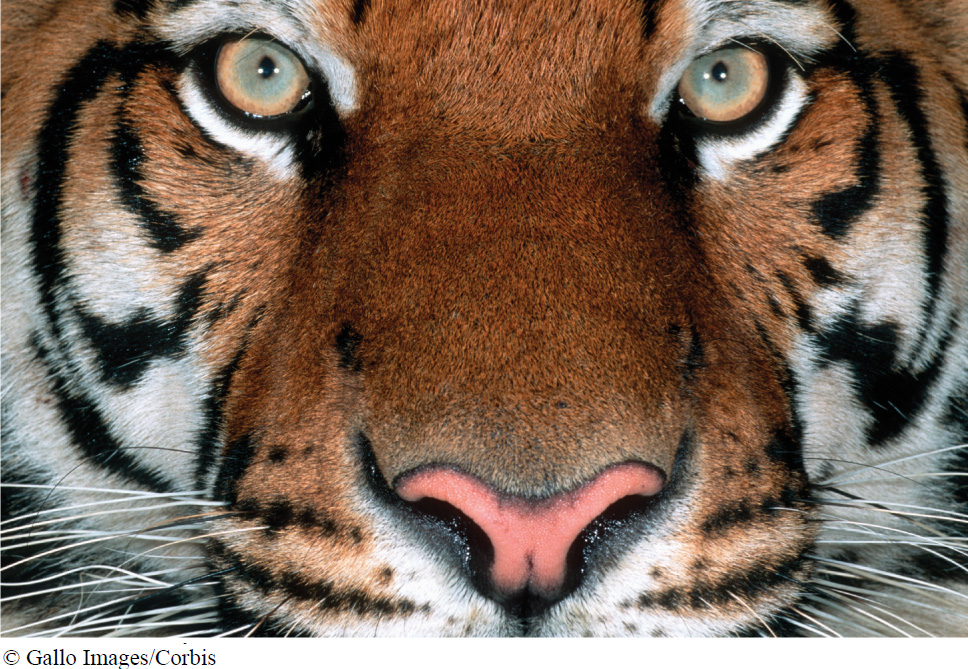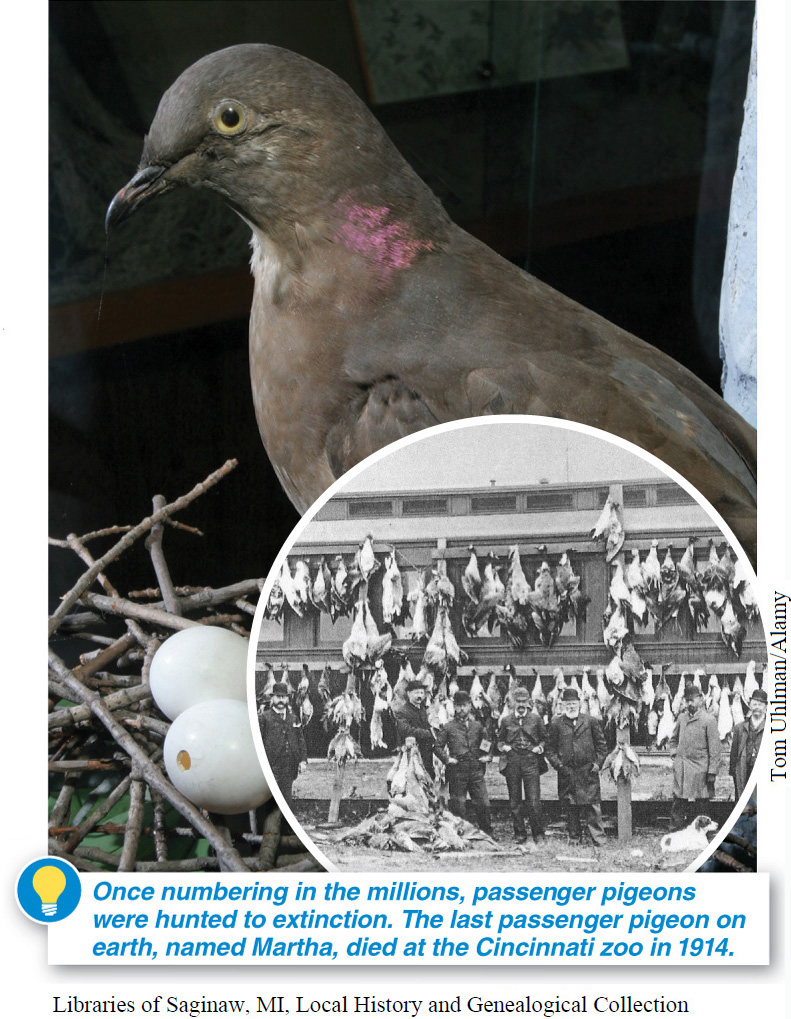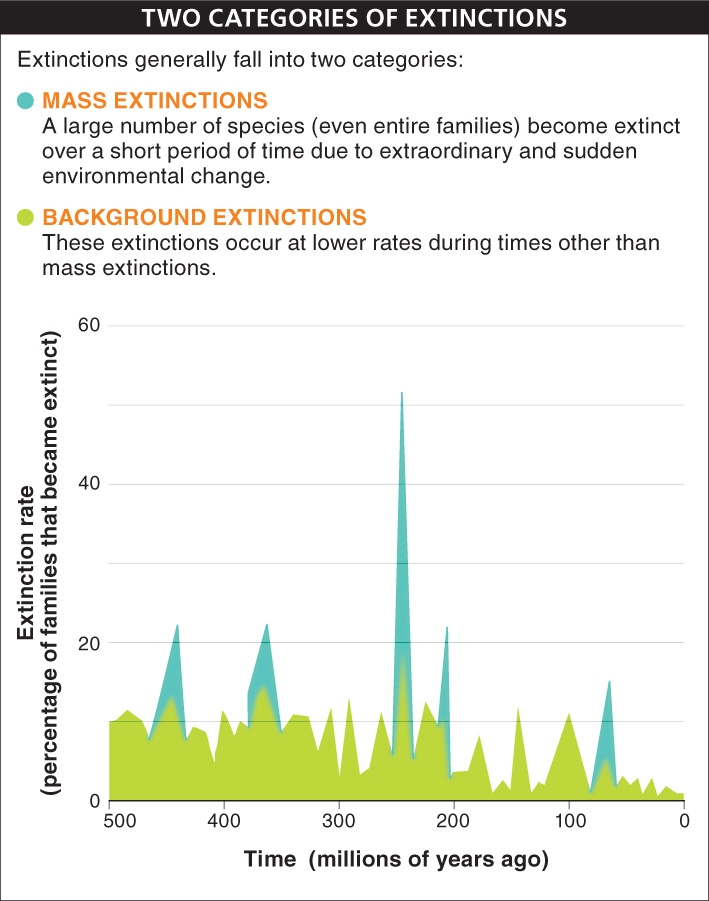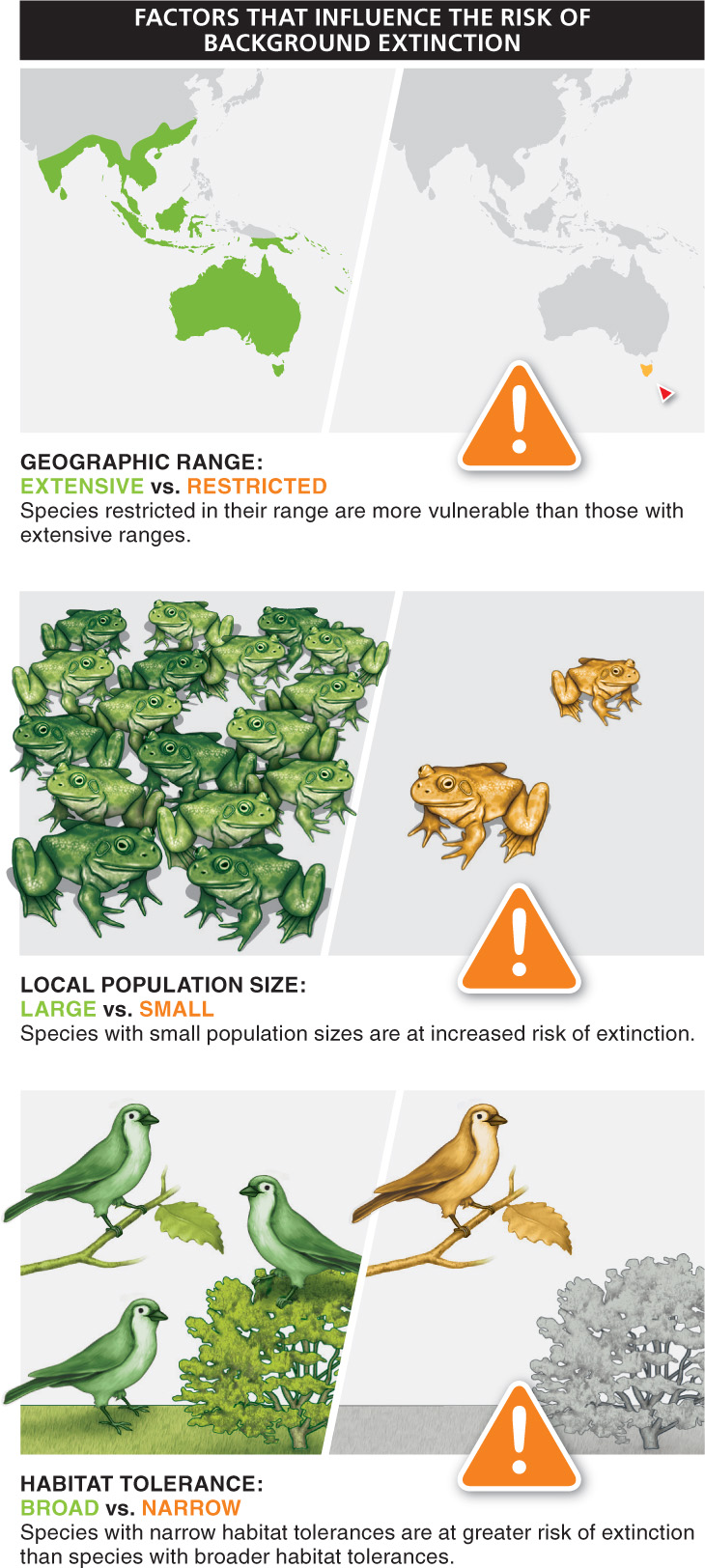
Imagine that you are on a deserted island. Alone. It would be hard and it would be lonely. The hope of rescue someday, however, would probably make things bearable. “Martha,” a passenger pigeon living in the Cincinnati zoo in the early 1900s, found herself in a situation of this sort—

On average, species persist for about 10 million years, but there is huge variation. Some may last for hundreds of millions of years, but for many others the number of years is much lower than the average. An extinction occurs when all individuals in a species have died. And whether you look at biodiversity from a utilitarian, aesthetic, or symbolic perspective, extinction is a tragic loss.
As we discussed in Chapter 10, extinctions can be divided into two general categories: mass extinctions and background extinctions (FIGURE 16-10), which are distinguished by the numbers of species affected. A mass extinction occurs when a large proportion of species on earth are lost in a short period of time (typically less than two million years, and in some cases much less)—such as when an asteroid struck earth 65 million years ago and about 75% of all species were wiped out. These extinctions are above and beyond the normal rate of extinctions that occur in any given period of time, referred to as the background extinction rate.

659
Does extinction only happen to weak, unfit species?
Both background and mass extinctions result in the same outcome for the species involved, but the causes tend to differ. In catastrophic mass extinction events, such as an asteroid impact, for example, the particular features of a species’ biology—
For any species, there is always a risk of extinction. But this risk can be larger or smaller, depending on certain features. Here we look at three important aspects of a species’ biology that can influence its extinction risk (FIGURE 16-11).

1. Geographic range: extensive versus restricted. Species restricted in their range—
660
2. Local population size: large versus small. Tigers and California condors, along with Welwitschia, a slow-
3. Habitat tolerance: broad versus narrow. “Habitat tolerance” describes the breadth of habitats in which a species can survive. Some plant species, for example, can tolerate large swings in water availability or soil pH or temperature. Others are limited to very narrow habitat ranges. The now-
One species that is enormously successful, thanks in part to its extensive geographic range, large local population sizes, and broad habitat tolerance, is our own. Humans are growing and expanding their range at a staggering rate, consuming resources in an unprecedentedly voracious fashion. By any measure, humans are one of the most successful species in earth’s history. This success, unfortunately, is having an increasingly negative effect on the species with which we share the planet, causing extinctions at a significantly higher rate than ever before. We next explore in more detail the conflict between humans’ success as a species and the survival of other species.
TAKE-HOME MESSAGE 16.5
Extinctions occur for fundamentally different reasons. Mass extinctions, which can destroy many or all of the species in an area, may reflect bad luck more than the particulars of a species’ biology, including its biochemistry, physiology, and behavior. Background extinctions, on the other hand, tend to be a consequence of one or more features of the species’ biology. Small population size, limited habitat range, and narrow habitat tolerance contribute to background extinctions.
Describe a hypothetical species that would be at the highest risk of background extinction in terms of the factors of geographic range, population size, and habitat tolerance.
The unfortunate species would have a restricted geographic range, a small population, and a narrow habitat tolerance.